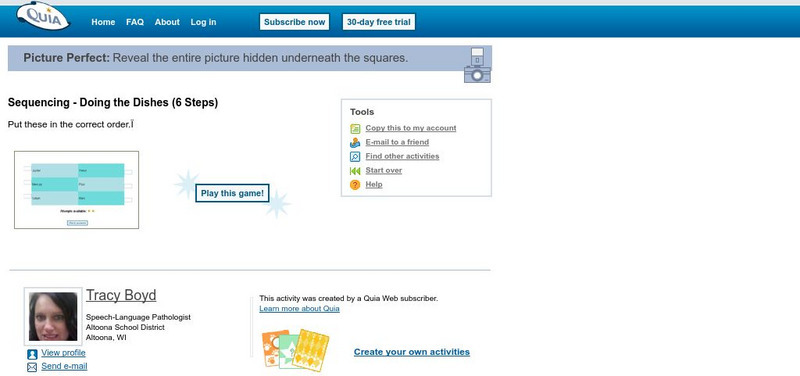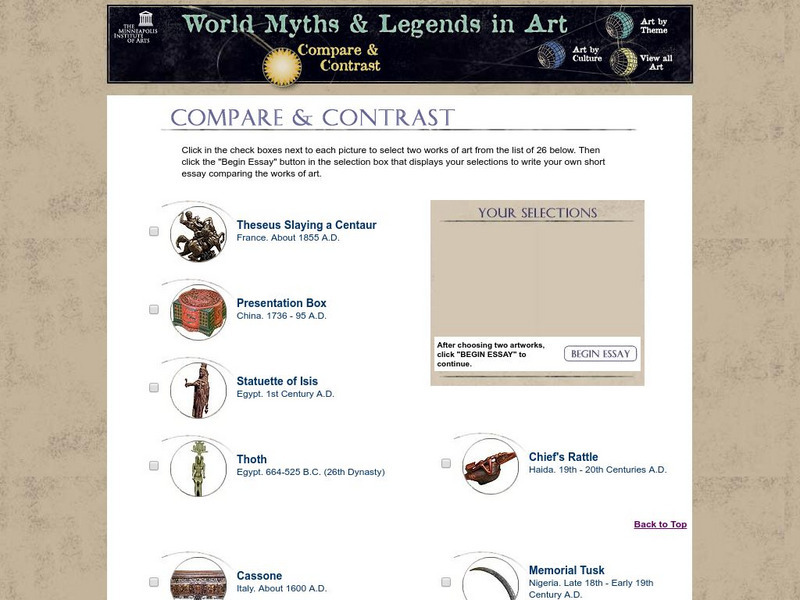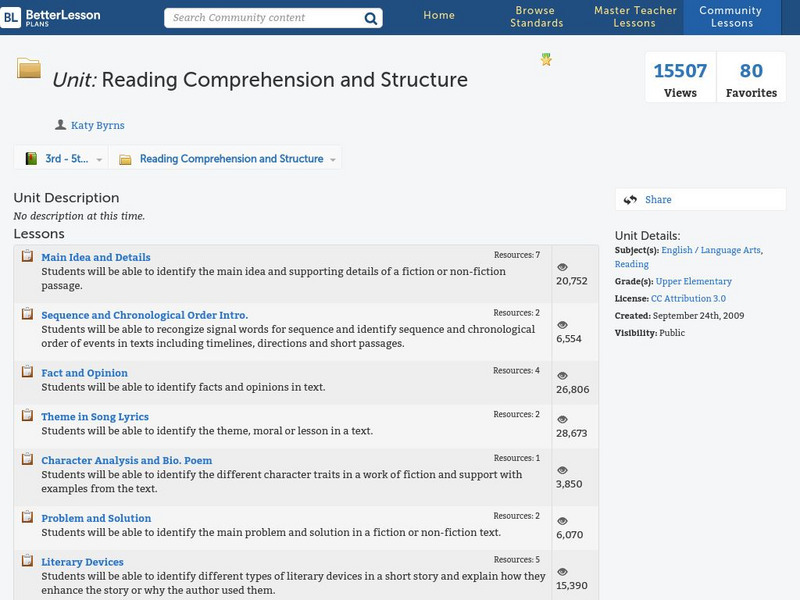EngageNY
How to Write Like a Scientist in the Field: Introduction to the Elements of Field Journals
It's time to start journaling. Scholars look at examples of science field journals. They work in pairs to examine and complete a note catcher about a field journal. They then add to an anchor chart by discussing the different features...
Roy Rosenzweig Center for History and New Media
Westward Expansion: Image and Reality
As your young historians study Westward Expansion, practice in-depth primary source analysis with the documents and guidelines presented in this resource. They will examine a lithograph and excerpts from two letters written by a Nebraska...
Student Handouts
Compare and Contrast Chart with Bubble Map
Take your traditional Venn diagrams and mind maps to the next level with this unique bubble map! The graphic organizer allows students to compare and contrast several aspects of two concepts, encouraging a more in-depth analysis...
New Bedford Whaling Museum
A New Bedford Voyage!
A thorough set of activities, articles, and reference material can enlighten your class about the history of whaling in New England. Kids travel back to a time when whale products were valuable and hunting whales was a way to help the...
Curated OER
My Senator and Me: A Dog's-Eye View of Washington, D.C.
Although this legislative process lesson plan is designed to accompany a specific text, it is valuable independently. Young learners participate in a picture walk (worksheet included) through My Senator and Me:...
PBS
Pbs Learning Media: Earning 100 Snelfus
In this Cyberchase video segment, the CyberSquad figures out how to earn 100 snelfus in 11 days.
Quia
Quia: Doing the Dishes
In this game, students are to read all nine steps to making homemade pizza and then number them in chronological order to reveal a hidden picture. Java is required.
ReadWriteThink
Read Write Think: Flying to Freedom: Tar Beach & the People Could Fly
Comparing and contrasting works and looking for underlying themes and messages are at the heart of this multicultural lesson plan. Provides links to several background resources, and suggestions for assessment.
E Reading Worksheets
E Reading Worksheets: Differentiated Reading Instruction Worksheets, Activities
A collection of differentiated reading activities are provided in this collection. Worksheets for the following reading topics are included: climax, story structure, elements of a story; fact and opinion; summarizing, narrative sequence;...
Minneapolis Institute of Arts
Minneapolis Institute of Arts: World Myths and Legends in Art: Compare/contrast
Students choose two works of art from twenty-six choices available. Each work has a picture followed by brief factual information. Students compare and contrast the two works based on information presented with both words and pictures....
South Carolina Educational Television
Know It All: Non Fiction Text Features
Fifth graders will use non-fiction books to identify and explain how text features help them as individual readers.
Better Lesson
Better Lesson: Unit: Reading Comprehension and Structure
This unit focuses on reading comprehension and structure. It includes lessons on the main idea and supporting details, theme, sequence, fact and opinion, literary devices, character, text features, inferences, organization of nonfiction,...
TES Global
Blendspace: Ri/rl 5.6 Point of View
Work through twenty-two links to pictures, charts, and videos to learn more about point of view in both informational and literary texts.












